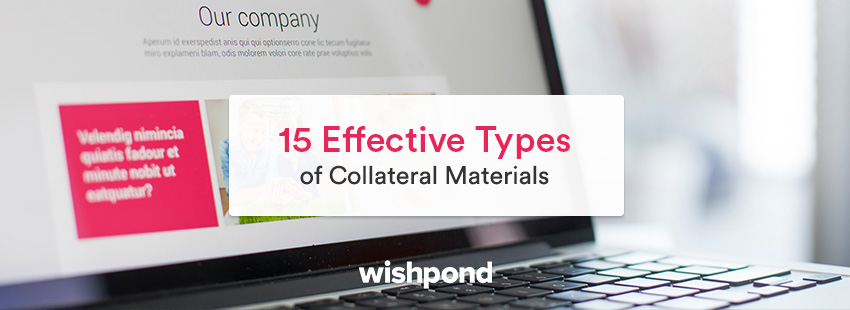Collateral Materials have evolved over time. 20 years ago, brochures and flyers were the secret weapons of every marketer. But these days, choosing the right marketing collateral can be tough. Hence, I want to give you a brief overview of 15 effective types of collateral materials for small businesses. In addition, you’ll learn how to create these marketing materials.
But first, let me tell you why you should use collateral materials.
Benefits of collateral materials
Marketing collateral offers a range of benefits:
- Well-designed collateral materials improve the credibility of your business.
- Collateral materials help you explain your products and services in a decent way.
- Prospects can check collateral materials whenever they want. Marketing collaterals aren’t “pushy”.
- Collateral materials allow you to provide value while parallel-presenting your product or service.
In all likelihood, you already know about the benefits, and mainly want to know about the different types you can use. I no longer want to put you on the rack. So let’s dive into the most effective collateral materials.
Types of Collateral Materials (and Tips about How to Create Them):
Online:
1. Landing Pages
What’s the difference between landing pages and regular web pages? Landing pages are optimized for conversion. The content of this landing page should help visitors easily understand your product or service.
Come up with a convincing headline. 90% of the time, visitors will only read your copy if they’ve read your headline (according to MarketingeExperiments.com).
Make sure that your landing page communicates one specific offer, and provides one clear call-to-action. What action should the visitor take after viewing your landing page? You should make it as easy as possible to join a newsletter or sign up for a service.

(Image Source: Mailchimp)
How Do I Create a Landing Page?
Of course, you can implement a landing page the way you implement any other web page. But if you don’t want to involve a developer, use software like Wishpond, Unbounce, or Instapage. These tools allow you to create unique landing pages within minutes.
2. Case Studies
Customer success stories are great ways to attract new customers. To present ways that your clients succeeded, use case studies that implement your product or service. Potential customers want to see how your product can be used to make their lives easier. Keep in mind that you need to adapt case studies to your different buyer personas.
Make case studies as specific as possible, and include real numbers. (For example, company XYZ was able to generate a ROI by 425% after using your product.) Also, discuss specific strategies, and don’t rely on lightweight marketing messages.

(Image Source: Contently)
How Do I Create Case Studies?
Unfortunately, an in-depth guide about how to create case studies would go beyond the scope of this article. Luckily, there are a lot of great resources about this topic:
3. White Paper
White papers are extensive reports about sophisticated topics. They’re always backed by research and provide actionable advice. The topic of a white paper should be based on three different factors:
- Who will read your white paper?
- What’s your company’s area of expertise?
- What’s the challenge that your customers are facing? How adept are you at solving it?
(Image Source: DocuSign)
How to Create a Whitepaper
The first step is choosing the right topic. Afterwards, you should search for inspiration. Review white papers of your competitors, as well as your industry’s best practices. Learn more about the style of their white papers and the ways they described the problem and communicated their solutions.
You can find great examples here:
- 5 Examples of B2B White Papers by kapost
- 14 White Paper Examples & Templates to Use Right Away by Visme
- 10 Page-Turning Examples of White Papers by Venngage
- 20 Creative Ideas for White Papers by Leadquizzes
Already done all this? Perfect. Start creating! Here’s a template you can use.
4. Blog Posts
You’re reading this article. You probably know about the value of blog posts. In this article, I want to provide you with actionable tips that provide value, which is my main focus. If you like this guest post, perhaps you’ll become informed about Filestage, and what we can do for you. But the only thing I have control over is you with a great experience while reading this post. It’s as easy as that.
Blog posts allow you to cover topics that are related to your business without selling something. They help you attract your buyer personas and provide them with value for free.

(Image Source: HubSpot)
How Do I Create Blog Posts?
I’m sure that Hemingway or Goethe would have loved to write blog posts. But don’t worry. You don’t need to be a professional writer to start creating posts.
Get started by following these six easy steps:
- Find a topic that provides a solution to one of the problems that your prospect or customer is experiencing.
- Create a list of suitable keywords around this topic. You can use software such as Ahrefs or SEMrush. Important factors for prioritizing keywords include level of competition (low is good), purchase intent (high is good), and search volume (high is good).
- Do research on the topic, and compile a list of the best existing articles.
- Decide on an angle that wasn’t covered before, and write the best article about this topic.
- Write 1200+ words. Add visuals like images and videos. (Blog articles with images get 94 % more views.) Add internal and outbound links. Properly proofread and format your article.
- Start building backlinks to your other article(s)
Easy, isn’t it? Not really, of course. But you know: No one is born a master. Further information on that topic can be found here:
- Link Building Case Study by Backlinko
- Guide for Creating The Best Blog Content by Jeff Bullas
- How to Start a Blog: Step-by-Step Guide by HubSpot
5. Microsites
Maybe you’ve heard about microsites, maybe not. But I’m quite sure that you’ve already visited some. According to Contently, Microsites are “branded content sites that live outside of the company homepage and/or brand URL.”
Such a microsite could be a website related to a specific campaign or a topic that’s related to your business. Building microsites can result in plenty of effort. But the potential outcome is clear: You’ll have a self-sustainable website that establishes its own brand, that’s disconnected from your actual website, and that generates traffic and leads. The difference between a landing page and a microsite is that the landing page only has one CTA, while the microsite focuses on different actions.
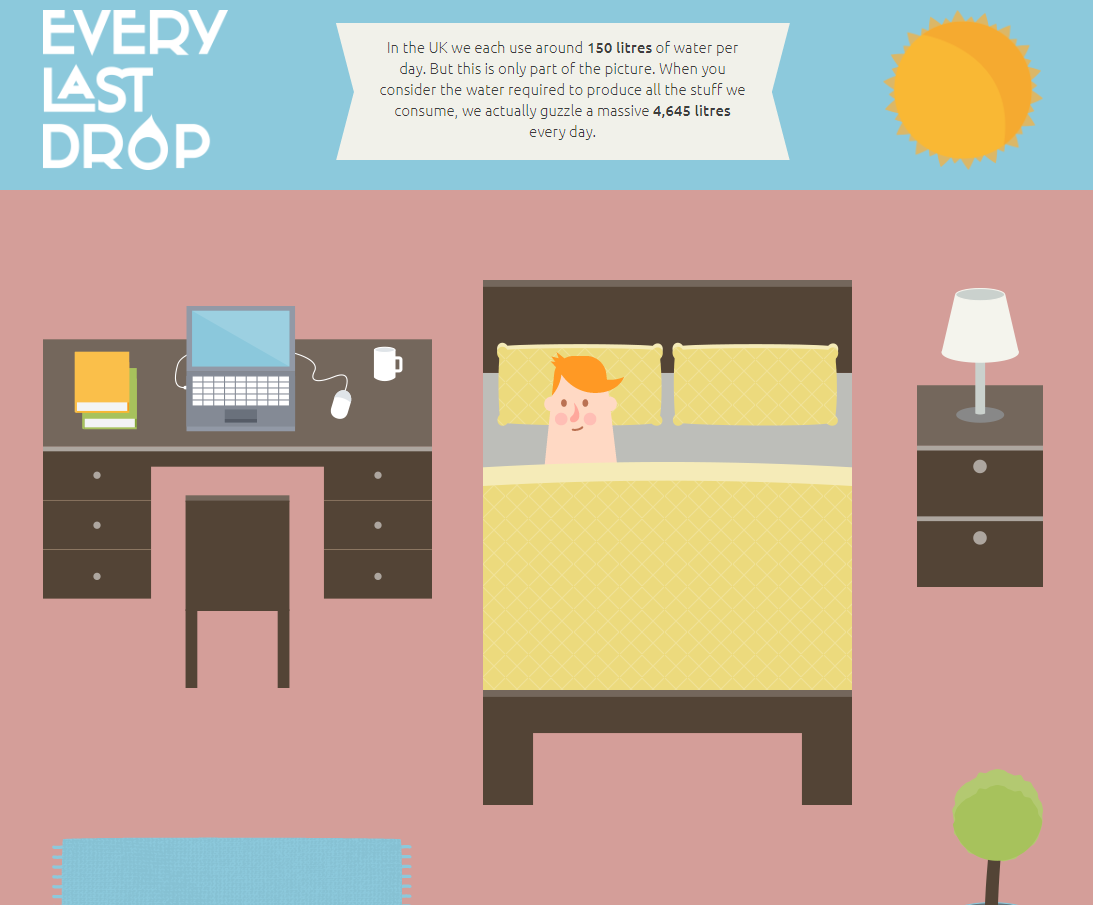
(Image Source: Waterwise)
How Do I Create Microsites?
- Find a topic that you want to build your microsite around, and decide on the content you want to provide. Make sure you know your goals, too. Why do you want to create a microsite?
- Analyze good examples of microsites. Find out why they’re working, and what you can apply to your own microsite:
- 17 Microsite Examples by SnapApp
- 6 Microsite Examples by Readz
- 11 Microsite Examples by HubSpot
- Build the microsite on your own, or utilize easy-to-use software like readymag or Readz.
6. Online Directory Submissions
Let’s face it. Everybody uses online directories and trusts reviews. Need to choose a restaurant? Use Yelp. Want to introduce new CRM software? Use G2Crowd. Need to research a company? Use LinkedIn.
Hence, you should create profiles for the directories your prospects are using.
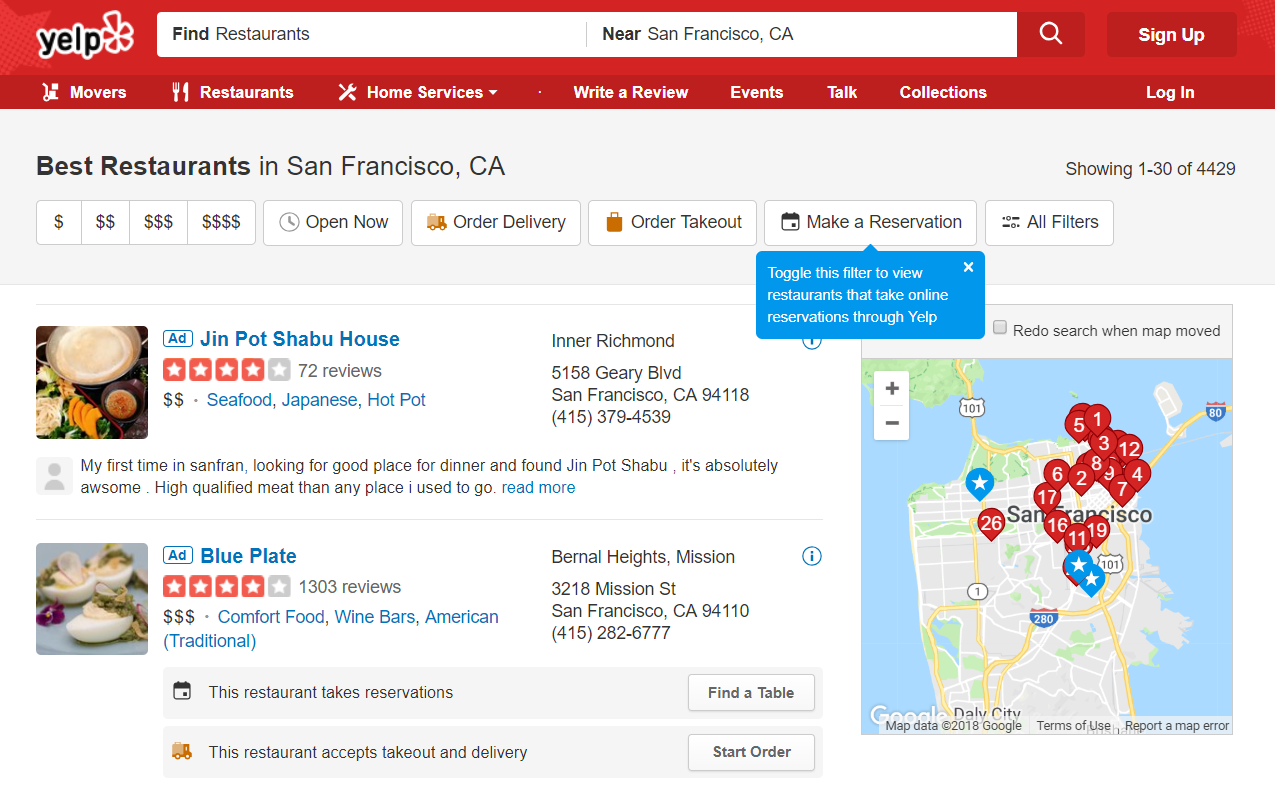
(Image Source: Yelp)
How Do I Create Directory Submissions?
- Go through this massive list of online directories, and compile an individual list of suitable ones that you want to create a profile on.
- Create profiles of all of the directories you’ve selected.
- Start (actively and passively) gathering reviews.
7. Compare Your Competitors’ Web Pages
When was the last time you purchased an electrical device without comparing it to others? Yep. Everyone compares everything.
Why not make it as easy as possible for them to compare your product or service? You only need to create a comparison page of your own.
The great advantage: You can determine the comparison factors. That way, you can make sure that your product/service looks as good as possible, compared to your competition.

Image Source: Formstack
How to Create a Product-Comparison Page
- Choose the relevant criteria you want to compare.
- Assemble all needed information.
- Create a dedicated landing page.
- Compare products, and use tools like comparison tables.
Not sure where to start? Check out these examples:
ActiveCampaign vs. all other marketing automation tools
8. Industry Web Pages
Do you know about the use cases of your product or service? Often, they’re used across different industries in different ways, which indicates that having generic web copy for all of them might be not enough. Use this opportunity, and build individual web pages for each of your use cases. Is your product used by healthcare and retail companies? Perfect.
Go ahead and create one page per industry. Learn more about the specific pains that these businesses are facing, and present your solution as a way to overcome them.
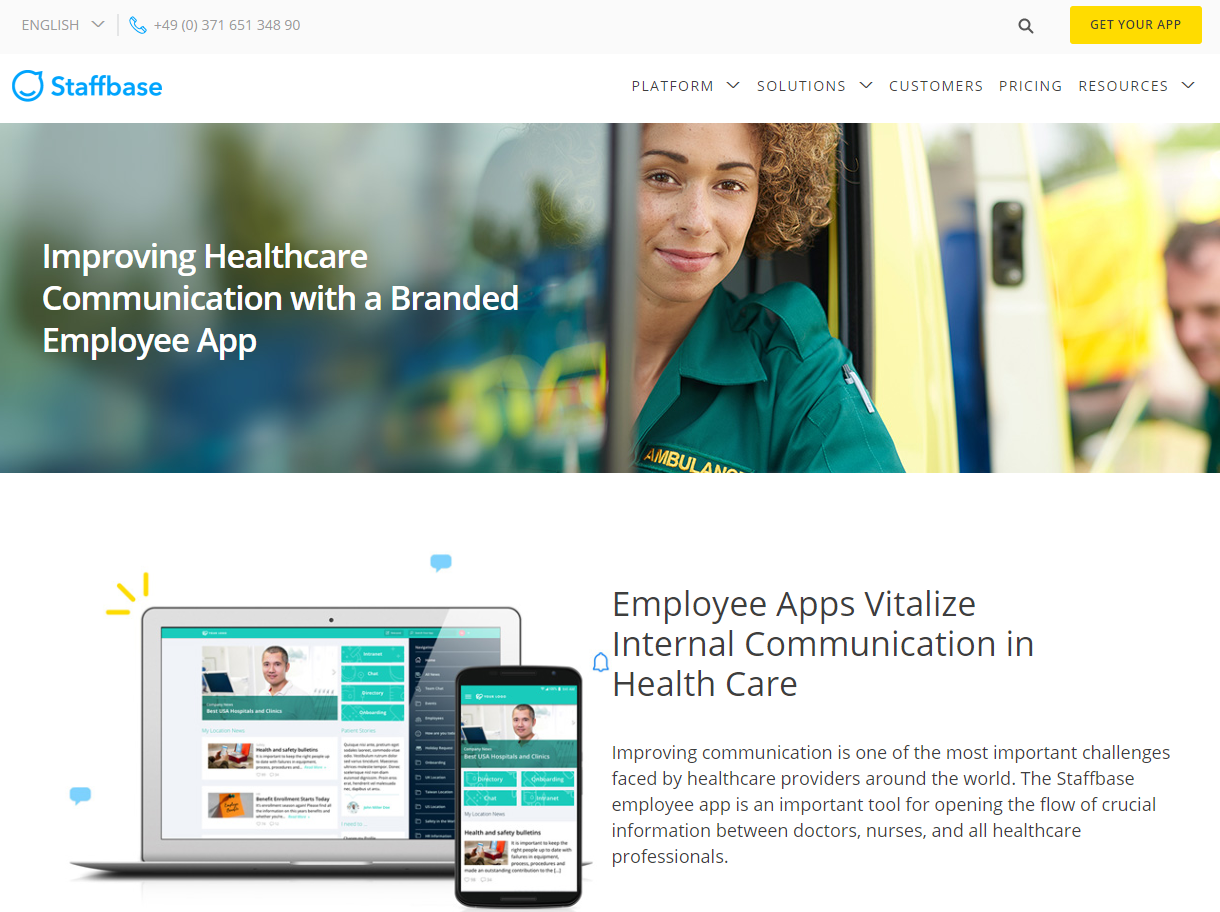
(Image Source: Staffbase)
How Do I Create Industry Pages?
- Pinpoint the relevant industry that your product or service is used in.
- Learn about the industry challenges and needs.
- Create the web pages by either coding them or using a landing-page tool, such as Wishpond or Instapage.
9. Testimonials
Do your customers love your product or service? Glad to hear that. Start gathering testimonials!
The reason is simple: Potential prospects are picky. They’re willing to buy your stuff. But only if it worked for others. Hence, they trust reviews that are firm but fair.
There are two ways to get testimonials:
- Actively ask happy customers for them.
- Happy customers post reviews about your product or service on platforms like Google or Yelp.

(Image Source: Zendesk)
How Do I Create a Testimonial Page?
Creating a convincing testimonial page requires some effort:
- Gather testimonials by directly reaching out to your most active customers. (You can also offer incentives by using a service such as Tango Card.)
- Check existing reviews on Google, Facebook, Yelp, and other directories. Then record them all in one place.
- For inspiration, check out these testimonial pages:
- 11 Examples of Customer Testimonial Pages by Wordstream
- 7 Simple Testimonial Examples by Sleeknote
- 9 Customer Testimonial Examples by OptinMonster
- Create a dedicated web page for collecting your testimonials.
10. Ebooks
Everybody is offering them. Everyone loves them. eBooks by OptinMonster
are some of the hottest collateral materials of the 21st century. The reason? They provide free and in-depth knowledge about topics you’re interested in. Offering eBooks will help you gather email addresses and generate leads, because people are willing to exchange their email addresses for free sources of information.
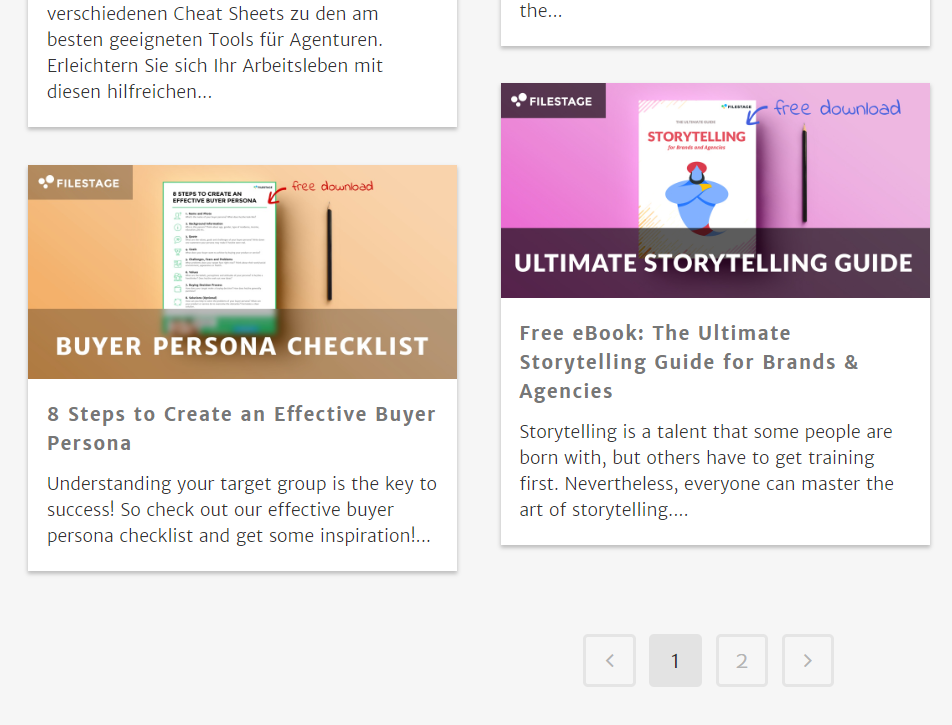
(Image Source: Filestage)
How Do I Create an Ebook?
Writing a book sounds like a massive challenge. But in most cases, it isn’t. You’ve probably created a decent amount of content already. Now find 3-5 articles about a specific theme, and put them together. Et voilà, the eBook is ready. You could either use a free eBook template, or just open Google Docs or Word and start merging.
11. Email Courses
Often, your customers won’t directly purchase your product or service. They’re at different stages of their customer journey. Hence, you’ll need to nurture them over time, and accompany them on their journey. An email course can be a good way to “control” their focus and level of awareness.
Here’s how it works:
- Prospects sign up for email courses.
- Prospects receive an automated sequence over a specific period.
- Hopefully, prospects convert into customers after being nurtured and clicking on one of your CTAs.
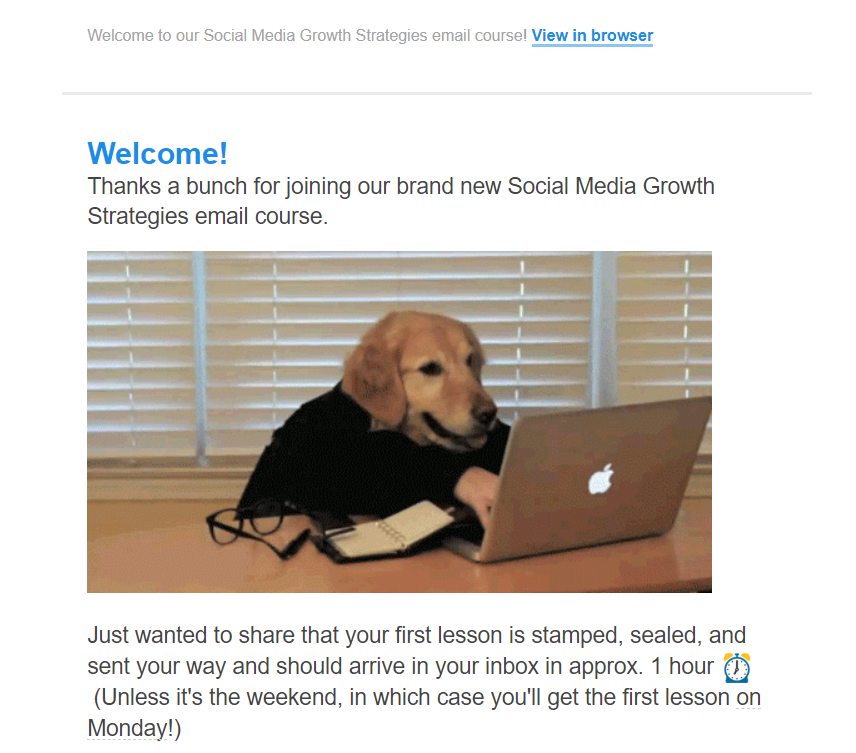
(Image Source: Buffer)
How Do I Create an Email Course?
- Choose a suitable subject.
- Check out these email course examples:
- Lead Generation Course by Unbounce
- Email Courses by Buffer
- Email Marketing Course by Campaign Monitor
- Conversion Optimization for the Enterprise Email Course by ConversionXL
- Create the content you want to include.
- Create the emails you want to send. (Keep them engaging and short!)
- Use a tool such as Campaign Monitor or Mailchimp to build the automated email course sequence.
- Create a landing page that will let prospects sign up for the course, and add your Mailchimp/Campaign Monitor form.
Offline
12. Flyers
Often, flyers are poorly designed, and only contain sales jargon. So now is your chance to do it better! According to the marketing agency Palmer, flyers should be designed as follows:
- Keep them minimalistic.
- Answer these W questions: who, what, when and where.
- Make it scannable.
- Provide a clear CTA.
- Use bright colors.
- Make use of engaging images.

(Image Source: The 6th)
How Do I Create Flyers?
Choose a suitable flyer template, and get started. If you don’t own graphic design software, you can also start with a simple Word flyer template. Of course, you can also use software such as Canva to design your own flyer.
13. Business Cards
Regularly meet new businesspeople? Then you should have a business card. Often, they’re considered old school, but funnily enough, everybody still has one. And it’s clear why: They make it as easy as possible to swap your contact information without any hassle.

(Image Source: Don’t Try Studio)
How Do I Create Business Cards?
It isn’t hard to create and print your own business cards. You can get started by using templates from Canva or Shopify. If you’re searching for an all-in-one-solution, try MOO.
14. Promotional Goodies
Do you own one or multiple promotional products? Chances are good that you do. 80% of consumers own at least one promotional product. Things like bags, pens, cups, power banks, and even lip balm are easy ways to get people’s attention. Goodies make great marketing collateral. People are happy to get them for free.
And they’re effective methods for reminding consumers about your product. Did you know that 89% of consumers can recall the name of the advertiser on a promotional product they received within the last 24 months?

(Image Source: Promotion Specialists)
How Do I Produce Promotional Goodies?
- Decide on the audience and your goal.
- Choose your promotional goodie. (For inspiration, check Pinterest or this goodie overview.)
- There are literally hundreds of manufacturers, such as Vistaprint, Empire Promos or Hit Promotional Products. Select one, and let them produce your promotional goodies
15. Direct Mail
Everyone is focusing on sending out thousands of outbound emails. Email is still a very effective channel. But what about its older sibling, direct mail? Fewer and fewer companies are using direct mail.
When was the last time you received a good piece of direct mail? Can’t remember? That might be the reason why few companies are taking this route. It’s hard to create engaging direct mails, and initial costs are higher than sending out emails. But the physical inbox is one of the least crowded ones.

(Image Source: b2bmarketing.net and Workfront)
How Do I Create Direct Mail?
- It’s important to make direct mails as engaging as possible. Hence, you should personalize content of direct mail as much as possible.
- Integrate direct mail into your existing marketing campaigns. Then you can either create an additional touch point, or cover an additional audience that you wouldn’t be able to reach otherwise.
- Provide a clear call-to-action. Your recipients should know what they have to do after receiving and reading your mail.
- To create your first direct mails, you can use a template or a service like Canva.
- If you’re searching for a service you can use to send out your direct mails, check out this comparison of direct mail services.
Conclusion
Hopefully, this overview will help you choose the right marketing collateral for your business. It’s crucial to find the collateral materials that fit your requirements and business.
Now I’m curious: In your experience, what collateral materials provide the highest ROI? Have I missed any relevant materials that you’re successfully using?
Author Bio:

Max Benz is a growth and content marketing manager at Filestage, a workflow software that helps you dramatically speed up your content review and approval cycles. He loves to create actionable content that makes your life easier. Max is passionate about SaaS, growth, and marketing. Fun fact: He also co-founded a German SaaS directory.

